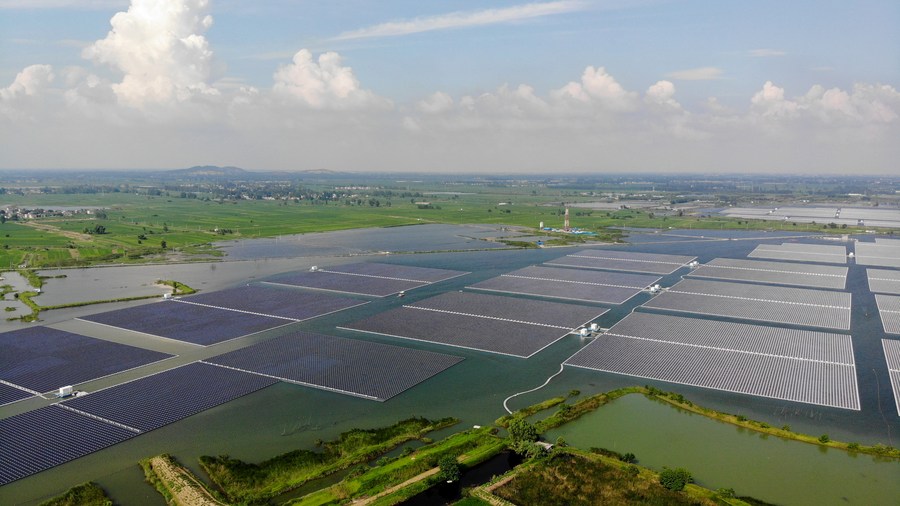Atoning for Climate Sins

The time calls for the U.S. to make atonement for the greenhouse gases it has emitted over the past 100 years and hopefully the Biden administration will truly honor its promises through demonstrable action, rather than verbal ambition.
Much to the surprise of climate observers worldwide, China and the United States issued a statement announcing to strengthen cooperation to tackle climate change at the 26th UN Climate Change Conference (COP26) in Glasgow, the UK, on November 11.
It’s an especially bold statement on the part of the U.S., considering that ever since the Donald Trump administration, the official American position had bordered on the mockery of almost any carbon emission reduction talk.
Before reaching their common statement, China and the U.S. had admittedly seen a few counterproductive exchanges. U.S. President Joe Biden and his special climate envoy John Kerry accused China of “not doing enough” and “declining to make stronger commitments.” China subsequently pushed back by citing facts, responding it had, on average, been adding about 12,000 hectares of forest area and 90,000 kW of installed photovoltaic (PV) capacity per day and is in the process of setting up a group of large-scale wind and PV projects with a total size of nearly 30 million kW. Tackling climate change requires concrete action, not empty words, as the spokesperson of the Chinese Foreign Ministry commented.
The new joint declaration reaffirmed that developing and developed countries shoulder common but differentiated responsibilities as well as employ their respective capabilities in the light of different national circumstances.
Although China and the U.S. are the world’s largest emitters of greenhouse gases, it is unfair to put China’s total population of 1.4 billion next to the 330 million U.S. residents.

From a historical angle, carbon dioxide can endure in the atmosphere for a very long time. According to the Global Carbon Budget (GCB), estimates hold that 40 percent of the carbon dioxide emitted by humans has lingered in the atmosphere since 1850. From the mid-18th century to 1950, developed countries accounted for 95 percent of the world’s total emissions; from 1950 to 2000, this figure accounted for 77 percent, and the U.S. was the world’s largest emitter of cumulative greenhouse gases.
As the world’s factory, China provides goods for consumers across the globe. The greenhouse gases produced during the making of these export products are included in China’s total carbon emissions on the basis of the producer principle, rather than the consumer principle.
Nevertheless, China has never made excuses for itself and has been actively participating in global climate governance. Moreover, the nation has proposed to peak carbon emissions before 2030, and then take the shortest 30 years in world history to reach carbon neutrality.
Because of its pragmatic approach, China has achieved visible results in the field of renewable energy. In terms of the total capacity of hydro power, wind power and solar power generation, cost-effective options to increase the use of non-fossil fuels, China ranks No.1 in the world, and in 2020, China’s wind and PV power generation stood equivalent to that produced by other countries worldwide combined. When it comes to the scale of production and sales of new energy vehicles, China has occupied the top spot for six consecutive years, with more than 5.5 million electric vehicles and half of the world’s sales of electric vehicles. To name a few.
Successful governance relies on solid actions and actions, in turn, speak louder than words. The time calls for the U.S. to make atonement for the greenhouse gases it has emitted over the past 100 years and hopefully the Biden administration will truly honor its promises through demonstrable action, rather than verbal ambition.
 Facebook
Facebook
 Twitter
Twitter
 Linkedin
Linkedin
 Google +
Google +










